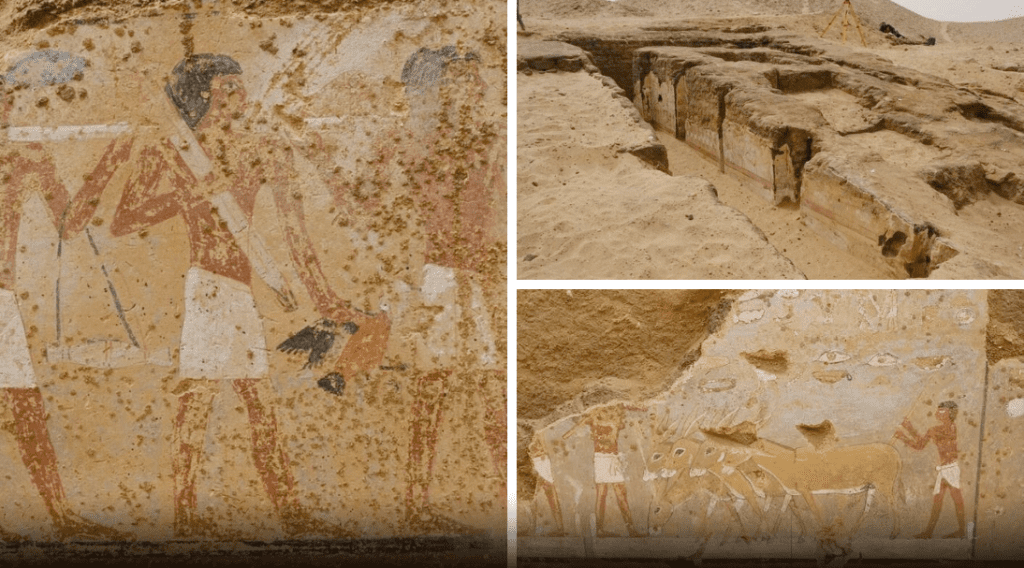Colorful murals depicting ordinary life in ancient Egypt have been uncovered in a mastaba tomb that dates back over 4,300 years. They were discovered in the Dahshur pyramid necropolis, some 25 miles (40.23km) south of Cairo, during a recent Egyptian-German archaeological expedition.
Dahshur is the southernmost of the Old Kingdom’s major pyramid necropolises, located near Memphis, the ancient capital. The Bent Pyramid and Red Pyramid, two huge pyramids built by King Sneferu, remain the area’s main attractions.
The mastaba, made of unfired mud brick, is approximately 26 feet by 39 feet (8 meters by 12 meters) and has seven burial pits as well as another shaft holding pottery bowls and other things used in funeral ceremonies.
According to inscriptions engraved into a massive limestone false door, Seneb-nebef, a man who worked as an administrator in the royal district, and his wife, Idut, owned the tomb in ancient Egypt.
The inscriptions, drawings, and pottery discovered within the tomb, as well as its form, indicate that it dates back to the end of the fifth or beginning of the sixth dynasty. This would be approximately 2,300 BC.
Stephan Seidlmayer, former head of the German Archaeological Institute in Berlin, supervised the trip and told CNN that the passageway and ritual room were painted with delicate murals on mud plaster—a rarity in Dahshur’s necropolis. Despite widespread damage, several drawnings have been preserved.
They depict the tomb owner and his wife in front of the offering table, images from everyday life (donkeys on the threshing floor, ships on the Nile, a market area), and servants bringing presents for the funeral service.
“In their elegant forms and perfect execution, the pictures offer valid evidence of the artistic milieu of the capital region of the developed Old Kingdom,” Seidlmayer concluded.
According to Egypt’s Ministry of Tourism and Antiquities, inscriptions show that the owner of the ancient tomb “held several positions in the royal palace in the administration of tenants,” while his wife “held the titles of Priestess of Hathor and Lady of the Sycamore.”
The German Archaeological Institute Cairo has been conducting excavations at Dahshur since 1976. The early stages focused on the pyramids of the Old Kingdom’s King Sneferu and the Middle Kingdom’s King Amenemhat III.
More recent excavations have concentrated on the tombs of prominent statesmen, priests, and officials from the same era.
Seidlmayer and his archeological team will continue to excavate the site “in an attempt to search for more secrets of this area,” according to the Egyptian Ministry of Tourism and Antiquities’ statement.
The statement further stated that “cleaning and documentation work will be carried out on the tomb and its inscriptions during the coming period.”


